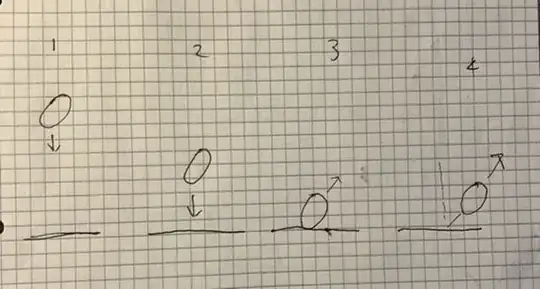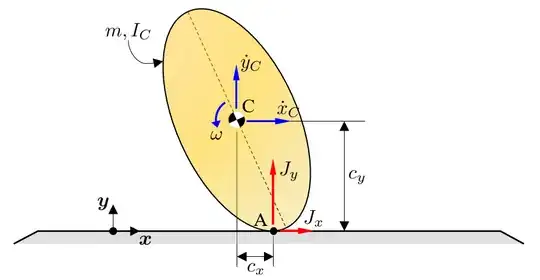A prolate spheroid like a rugby ball or American football, dropped vertically with no rotation, will bounce vertically if it is oriented along one of it's axes of symmetry (in other words, if its centre of mass is directly above the point of impact on the ground).
However, if the ball is tilted some amount, the ball bounces with some horizontal component to its motion (as well as some angular velocity, but I'm not concerned with that for now).
 What's going on here to make this happen? At the point of impact, the normal force from the floor is of course purely vertical, so where does the horizontal component come from?
What's going on here to make this happen? At the point of impact, the normal force from the floor is of course purely vertical, so where does the horizontal component come from?
Intuitively, (and probably incorrectly) I have a picture in my head of a force being applied in a direction determined by the vector given by the point of impact on the ground and the centre of mass, but I think that's probably the wrong way to think about it.
Is the horizontal force coming from friction, that acts on the ball during the duration of its contact with the ground? I guess during the impact, the ball has a tendancy to want to push the point of contact away from the center of mass, in order for the center of mass to continue travelling downwards, and perhaps it's the friction in response to this that causes the horizontal component to the bounce?
